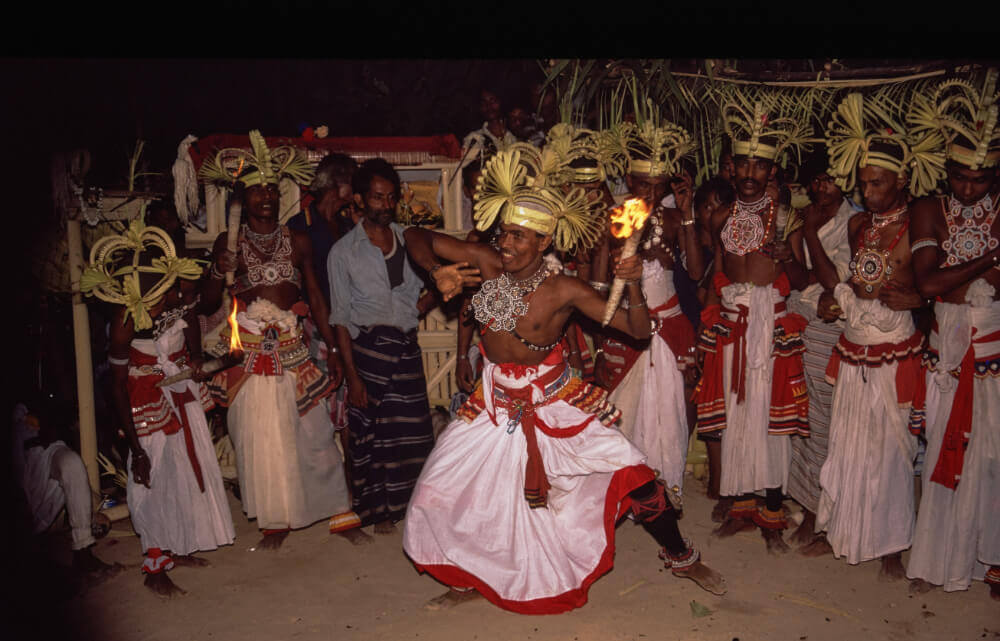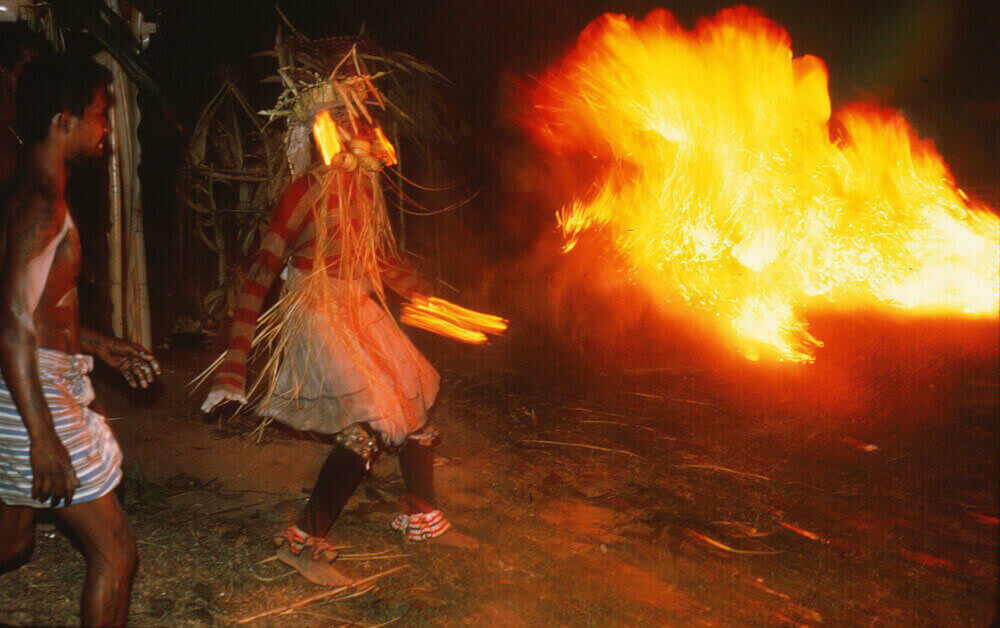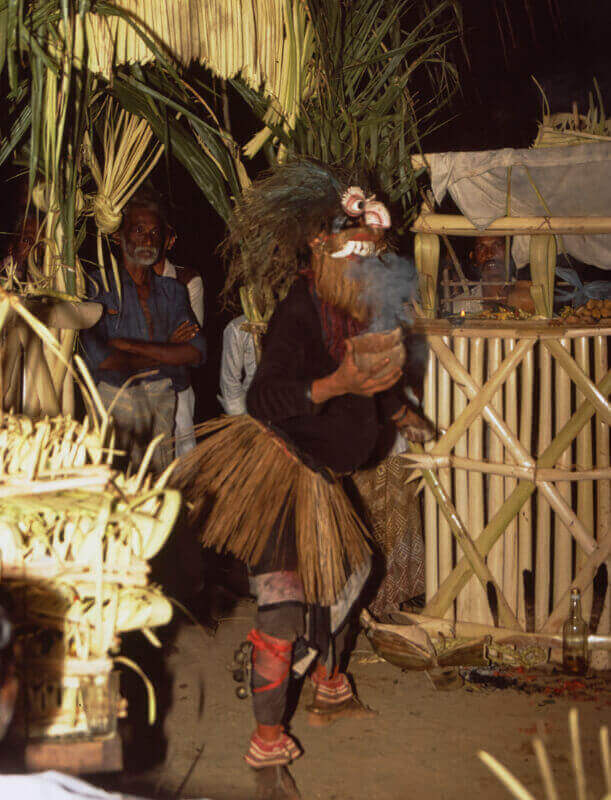Mask Performances, the Yaktovil and the Sanni Yakuma
by Wolfgang Mey
The south-west coast region of Sri Lanka is known for its elaborate mask dances. Healing rituals (Yaktovil) like the Sanni Yakuma have been used to treat people made ill by malevolent supernatural beings (yakku). Also, a form of masked dance theatre called Kolam is still sometimes performed. In these traditions actors wear wooden masks and costumes to express the character of the people or spirits they personify. Recitations are accompanied by drumming on the yak bera, the low country drum. The dance style represents the energetic, so called “low country” style. Performances often include fireworks created by burning resin powder.
- The huge mask of Maha Kola Sanniya, or “Lord of 18 Diseases” includes miniature versions of the masks of yakku or the malevolent supernatural beings creating various illnesses. Etnografiska Museet, Stockholm
Yaktovils, the Healing Rituals
Before the actual healing ritual begins, the patient’s illness is diagnosed by the leader of the performance (yakedura). He identifies the negative influences of the malevolent supernatural beings called yakku that have caused the patient’s illness. He also schedules a favourable day for the ritual. It requires at least two drummers, two dancers, a master of the ceremony, and some helpers. Elaborately designed small structures are erected in front of the patient’s house, “palaces” for the yakku, stands for the offerings and an altar. They are skilfully crafted from strips of palm leaf and the trunks of banana perennials.
- The energetic and poweful dances represent the so called “low country” style. Wolfgang Mey
In their complexity, these ceremonies have a clear structure. At the beginning of the ceremony, the Buddha and the great gods are invoked and asked for their support for the successful performance of the nightly ritual. This is followed by elaborate, acrobatic invitation dances, and the malevolent yakku are promised lavish gifts, fireworks, and honourable treatment. These dances are extremely dense and concentrated performances that often push the dancers to the limits of their strength.
- Frightening pyrotechnical effects are created by throwing resin powder into the flames. Jukka O. Miettinen
Then a small selection of the yakku who have caused the patient’s illness are invited to the venue. The actors’ masks reveal the illnesses that these malevolent beings symbolise. At the end of the ceremony all these yakku receive their gifts and promise the leader of the ceremony to withdraw their sickening influences. One of the most impressive healing ritual is the Sanni Yakuma.
Sanni Yakuma, the Pacification of Illnesses
The diseases causing yakku tell their painful history, and in comic and light-hearted interludes, which show how they see the world through the eyes of greed due to their perpetual desire and envy. The actors’ masks reveal the diseases that these malevolent beings symbolise. There are, for example, those who symbolise blindness, digestive problems, body aches and vomiting fits etc. The ritual specialist involves all the yakku in dialogues, which are characterised by puns and a hearty and, to the delight of the audience, obscene humour.
- The Dupa Paliya purifies the place with smoke, which wards off the evil infuenses. Wolfgang Mey
Through skilful dialogue, the master of the ceremony manages to expose how the yakku suffer from their fate: they are beings of greed and attachment and thus show analogously how the patient suffers from this greed and envy. He exposes the stupidity and narrow-mindedness of the yakku‘s world view and portrays them as ignorant, ridiculous, and pitiful beings. At the end of the ceremony, the Lord of 18 Diseases (Maha Kola Sanniya) appears. They withdraw their evil influences, and the ceremony ends with a final dance that neutralises any remaining impurities.



